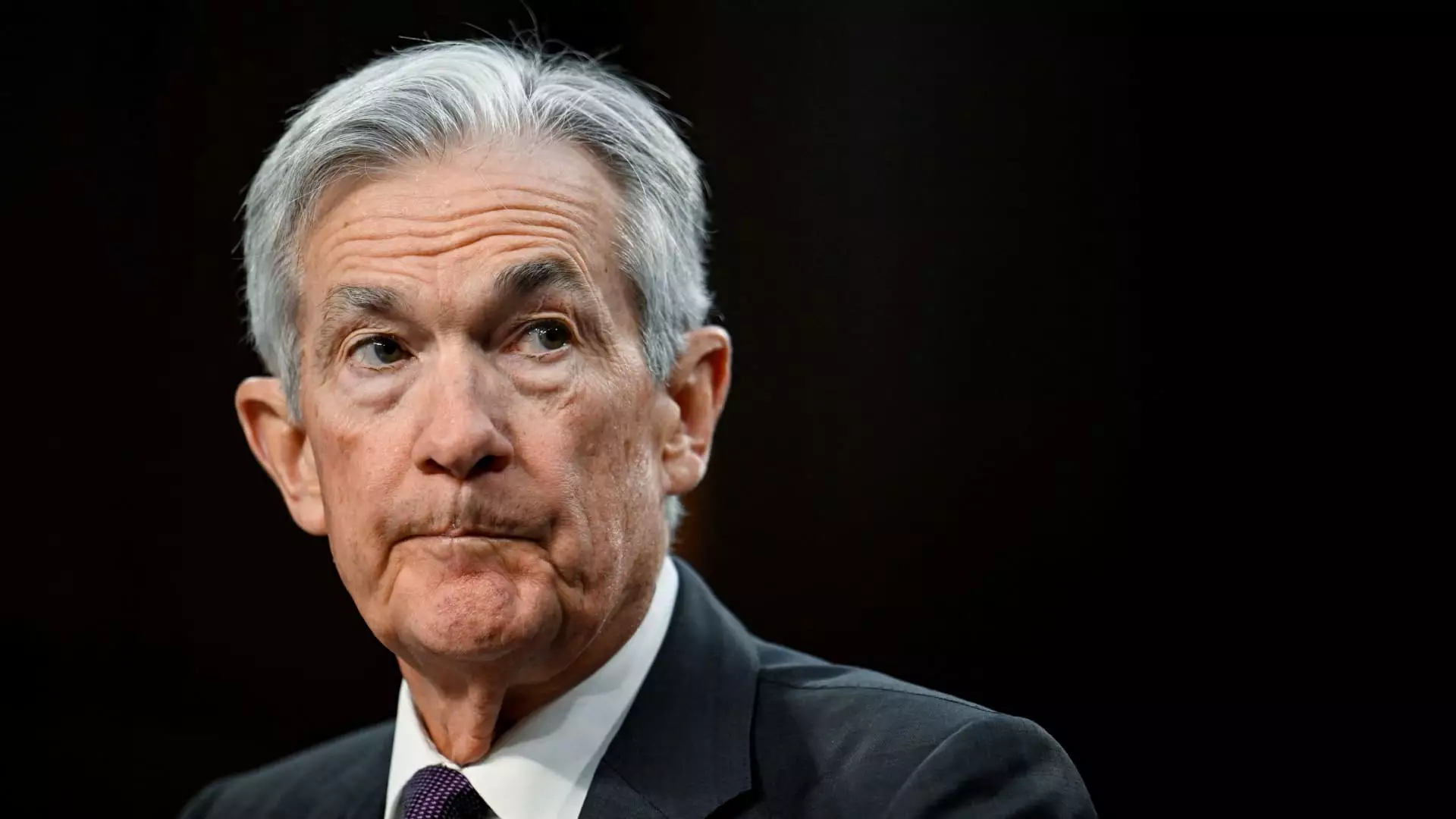The current landscape of monetary policy as dictated by the Federal Reserve stands as a testament to the complex interplay of various economic forces. While officials frequently assert that their policy is “well-positioned” to confront potential risks, a more nuanced examination reveals a situation characterized by stagnation rather than proactive adaptability. The Federal Reserve appears ensnared in a neutral stance, caught in the uncertainty of economic variables. This article delves into the implications of this predicament, highlighting the multifaceted challenges faced by policymakers.
The dialogue surrounding Federal Reserve policy has become increasingly laden with the term “uncertainty.” Recent statements, particularly those from influential figures such as Atlanta Fed President Raphael Bostic, illustrate the duality of enthusiasm and apprehension that permeates the current economic climate. Bostic’s observations on the volatility stemming from President Trump’s trade and economic strategies underscore the dilemma: while there are glimpses of optimism—especially within banking sectors related to possible regulatory shifts—apprehension regarding trade tariffs casts a long shadow.
The usage of the term “well-positioned” serves as a signaling mechanism to markets, suggesting a sense of readiness for shifting economic tides. However, an in-depth analysis reveals that the Fed’s ability to influence economic outcomes is hampered by the overwhelming uncertainty. Rather than being able to pivot swiftly in response to economic indicators, the Federal Reserve seems resigned to a long wait for clarity on both domestic and global fronts. The minutes from the Federal Open Market Committee (FOMC) meetings reflect this ambivalence, replete with references to the “elevated uncertainty” surrounding various pivotal economic policies.
Central to the Fed’s conundrum is the unpredictable nature of inflation. Despite an overarching goal of maintaining a 2% inflation rate—as articulated by Fed officials—the reality of approaching four years of elusive target attainment casts doubt on the efficacy of the current policy. St. Louis Fed President Alberto Musalem has voiced a growing concern that inflation could surge above target levels if apprehensions about tariffs provoke consumer fears. His cautionary stance suggests that while the existing policy may be moderately restrictive, the economic environment remains volatile.
Musalem’s insights highlight the precarious balance the Fed must maintain. The possibility of inflation spiking while economic activity tapers presents a situation where the Fed could be forced to confront a stagflation-like scenario. This underscores the critical need for vigilance and readiness to adapt policies should inflationary pressures escalate unchecked.
Tariffs represent one significant factor contributing to the prevailing uncertainty, but they are compounded by other variables such as immigration and fiscal policies. Chicago Fed President Austan Goolsbee’s comments reflect an acute awareness of the intricate dynamics at play. His suggestion that the impact of tariffs may resemble a “Covid-sized shock” speaks to the potential for profound economic upheaval. This uncertainty complicates the Fed’s decision-making and underscores a reluctance to provoke additional volatility by altering interest rates haphazardly.
Moreover, the analysis of financial stability is nuanced; while inflation and trade policies remain focal points, the systemic risks in the U.S. bond market loom large. Prominent economist Mark Zandi has articulated concerns regarding the structural fragility of the bond market, emphasizing the potential for a significant sell-off due to heightened leverage and the breadth of long-duration debt held by banks. Such conditions pose an existential threat to market stability, prompting the Fed to exercise extreme caution when considering any interest rate adjustments.
As the Federal Reserve maneuvers through this turbulent economic landscape, a recalibration of strategies will become essential. The prevailing sentiment among economists suggests skepticism regarding the feasibility of rate cuts in the short term, especially under the specter of persistent inflationary pressures and geopolitical unpredictability. Zandi’s viewpoint encapsulates the overarching anxiety surrounding the Fed’s current position, advocating for a more cautious approach.
The Federal Reserve’s current stance may be characterized as one of immobilization amidst a sea of uncertainties. Policymakers must cultivate a robust framework for continuous assessment of economic indicators while being prepared to pivot as necessary. As it grapples with the myriad threats lurking in the economic shadows, the Fed’s path forward will necessitate a delicate balance of caution and responsiveness, remaining vigilant against the unpredictable forces shaping the economy.

